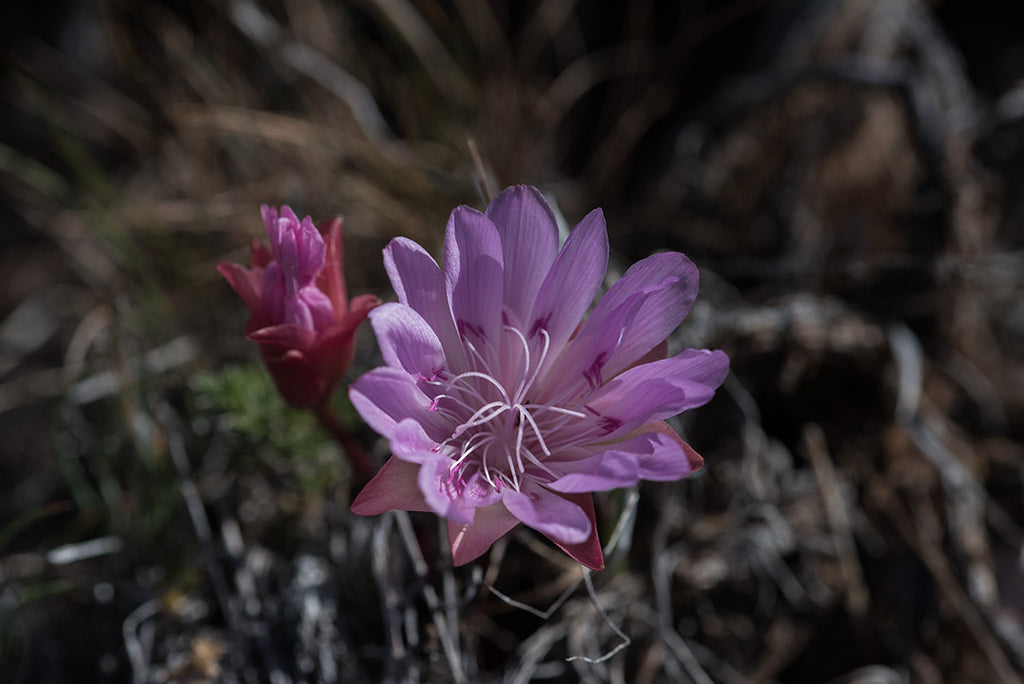Unless you were born in the North Country, you probably believe the summer solstice is the greatest time of year. Day has eroded both ends of night to the fullest, giving us more vitamin D and less darkness than during any other 24-hour period. If, like me, however, you grew up at or above the 45th Parallel, you know this is no cause for celebration. In fact, quite the opposite, for after June 21 the days begin shrinking. The nights ooze longer. And that part of our brain that never forgets the blasting chill of a winter wind says, "Chink walls, cut firewood, and prepare yourself for harder times."
Any day now, I'll get up and hear the very first sign of fall. Or, more correctly, I'll not hear it. Sometime between now and the 4th of July, I'll step outside in the pre-dawn light of a day a minute or two shorter than the last and won't hear any song birds. They have serenaded me since the end of March, rejoicing in spring and the perpetuation of their species, but now nests are emptying, pairs which don't mate for life are going their separate ways, and the morning sound will soon be a prevailing silence. God, I hate the summer solstice!
But North Country life, along with a healthy cynicism, also breeds ingenuity. It's necessary for our survival, if not sanity. So, like many Vermonters, I've found a way to cheat - to get around the sinking feeling that the march toward winter has begun even as summer's heat has only just set it. Luckily, Montana's Rocky Mountains provide me the perfect setting to turn back time, which I do by going up. Every thousand feet of elevation takes me back a step, allowing me to continually revisit the various stages of spring. On the longest day of 2016, I traveled to the Pryor Mountains south of Billings to journey backward.
The Pryors are probably a continuation of Wyoming's Big Horns, separated by the canyon carved out by the Big Horn River. A small range as Montana mountains go, they jut up from cactus-studded plains and the first picture I take is of flowering prickly pear at the junction of mountain and desert. It will bloom for only a few days before triple-digit temperatures dry this ground to literal dust.

With the cactus falling away behind me in my rear view mirror, I begin the climb up a road more rock than gravel, twisting my way around woody junipers as the "road" follows a ridge between two narrow canyons of red sandstone. The first mile takes me up more than 1500 vertical feet to a bench of sage where it's 8 degrees cooler than where I stopped below. The breeze is out of the west and feels good, a welcome change to the still air of the valley. I park in the shade of a thick-barked Douglas fir and walk in the wind with about as much regard to direction as it has.
Here, wild iris blooms in a damp meadow. I haven't seen this flower for at least three weeks in Billings, where its blue blossoms have been replaced by dry seed pods. I watch its delicate petals undulate in air currents like the flowing garb of belly dancers, then spot of pair growing close together, perhaps from the same bulb. I take one picture before a hoard of mosquitoes says they've claimed this riparian area for themselves. They can manage a break-even fight against the wind, but my swinging ball cap tips the battle in my favor, and I walk quickly up into sage, escaping with only a handful of bites.

Among the sage, I find bitterroot flowers in various stages of opening. Our state flower here in Montana, they're one of my favorites. Large and tropical looking, they add splashes of color to the pea-green sage and brown stubble grass. A blue, spring azure butterfly pauses near one I've knelt to take a picture of but doesn't land. Instead, it gives itself to the wind and is whisked out of sight, perhaps looking for a patch of damp soil back around the iris, perhaps simply traveling without any particular destination much like me.
In this mountain country, there's very little topsoil, and the paths of long-gone bison are still visible, cut into the ground by thousands of hooves over thousands of years. I follow one toward the rim of a finger canyon, wondering how long it's been since the herd passed this way. A sand of grainy quartz and feldspar, eroded from granite bedrock, washes into the trail ahead of me. At some point, these mountains will change enough to erase all sign of the bison, but I'm glad that today I'm here and can walk in their footsteps.
On the rim of the canyon, where the trail zigzags down through tilting slabs of sandstone, I find a bitterroot and paintbrush growing together, their petals reaching for sun, jockeying for the best position, brilliant red and delicate pink complimenting each other. I know they weren't planted here, but the arrangement is perfect, as though Nature has gifted the world this small bouquet. I take one picture, then follow the bison trail back toward my truck.

From the sage flat, the road climbs again, snaking through a spruce drainage where water trickles down the tire tracks ahead of me. Creeping along, slower actually than I could walk, I look out my window and see where a bear has stepped in mud last night. I park to look at the track, fine indentations of hair from its foot preserved for me in this wet cast, then spot a hillside where arrowleaf balsamroot has completely taken over like an army of miniature sunflowers.
The white bark pine are mostly dead here, evidence of a changing, warmer climate, and one lone giant stands above this field of yellow, dark limbs etched against a blue sky. I frame the picture, bright sun entering a corner of the shot, then press the shutter, unable not to think about both the bison and white bark - gone like the season in Billings which I've come up here to recapture.

I drive higher. In the distance, I can see a stubborn snow drift curving along the spine of one of the Pryor's highest peaks. That's where I want to end up, though a recent Forest Service road closure means walking a mile or so. I never mind the exercise, especially on a day like this, and I smile when I notice it's fourteen degrees cooler where I park than where I started up the mountain. It feels like early May here, a newness to the air and freshness to the landscape which I haven't felt for six weeks.
Here, in this high country, three of the seasons are short and often run together, overlapping each other as if ganging up against winter. It's a three-against-one fight up here that usually ends in a draw. But today, spring's got the upper hand, and I'm able to walk through an ocean of lupines, balsamroot, and iris - through a setting as pretty as any in North America (with the possible exception of my own Northern Vermont during the last week of September).
Sparrows call to each other, and one flushes from the base of a spreading lupine at my feet. I glance down and see tiny, spotted eggs nestled close together in the middle of a dish made of dry grass and tawny deer hair, probably picked from some barbwire fence. While young, spotted robins patrol my lawn in Billings for worms, up here nothing has hatched yet. I move one lupine over and take a quick picture, chastised the while by the mother sparrow, and then, like the dancing balsamroot, I wave goodbye, and lengthen my stride toward the snow drift.

In fifteen minutes, my boots are leaving their tread impressions in hard-packed snow like the bear's feet did in mud. All around me I hear water dripping. Running. Falling away toward an iris-lined seep. Pouring downhill like the seasons. Running fast in one direction.
I've come up here to turn back the clock a bit, but lying down to make a snow angel I'm suddenly aware of my age and, despite the fact that no one's around, how foolish I'd look to anyone witnessing this. The Rocky Mountain time machine only takes me back so far, I guess.
The back of my pants and shirt are soaked now. They'll dry fast in the wind, and my outline in the snow will last a day or two. Maybe longer, I think, if the nights are really cold. I start back to my truck, thinking again about bison and white bark pine, feeling less successful about doing much more than seeing a pretty place at a pretty time of year. I stop for a final picture that seems to capture my thoughts -- a dandelion gone to seed even as the world struggles to hold onto new growth behind it. And then I remember the sparrow eggs, the bitterroot flowers, and the first breath of air I took outside my truck where it's parked half a mile from me. I suppose that summer will find this country and that fall and winter will follow. But they're not here yet, and they'll have a new sparrow family, a few million wildflower seeds, and perhaps the faintest outline of a snow angel to contend with when they come looking.





Dianne Pedley
Thanks for taking me to nature in the West. I’m always impressed by the spread of similarities in floral life in so many places. Also enjoyed traveling backwards in season while hiking higher on a mountain.